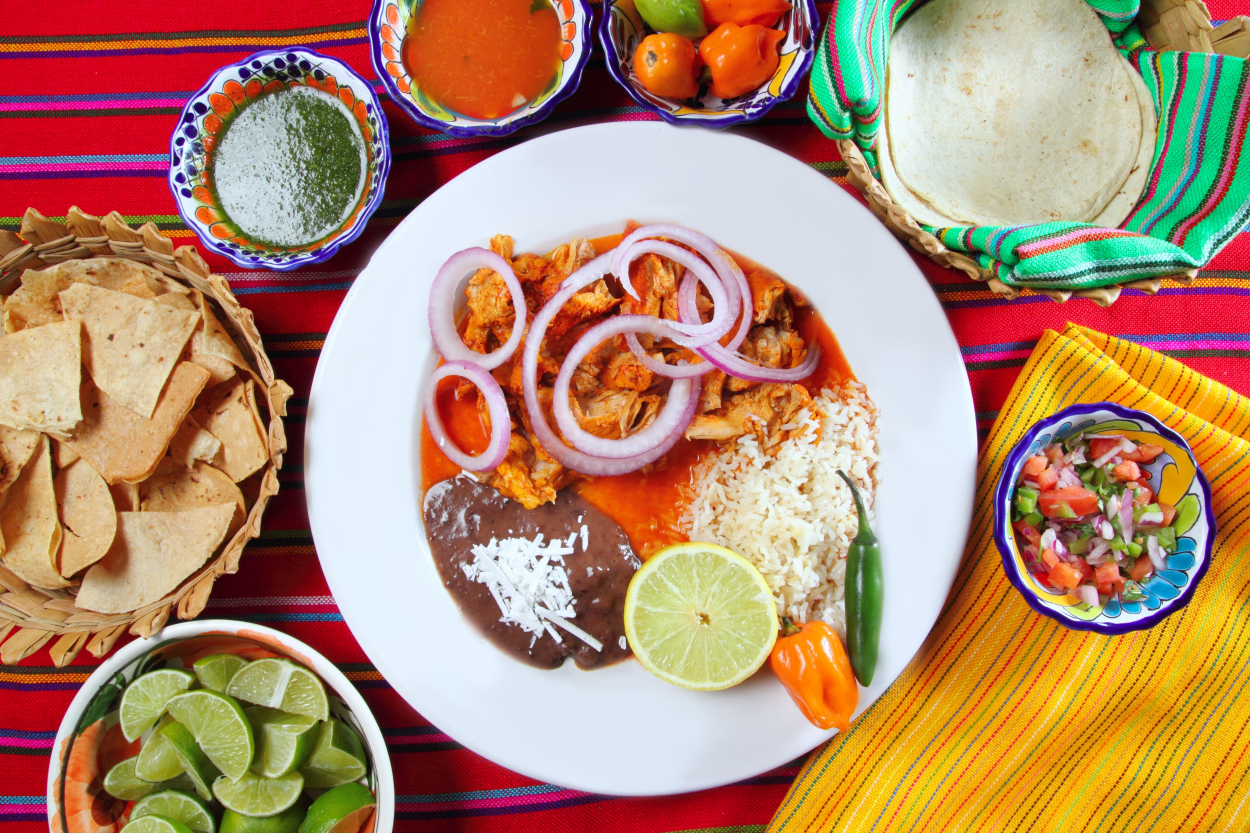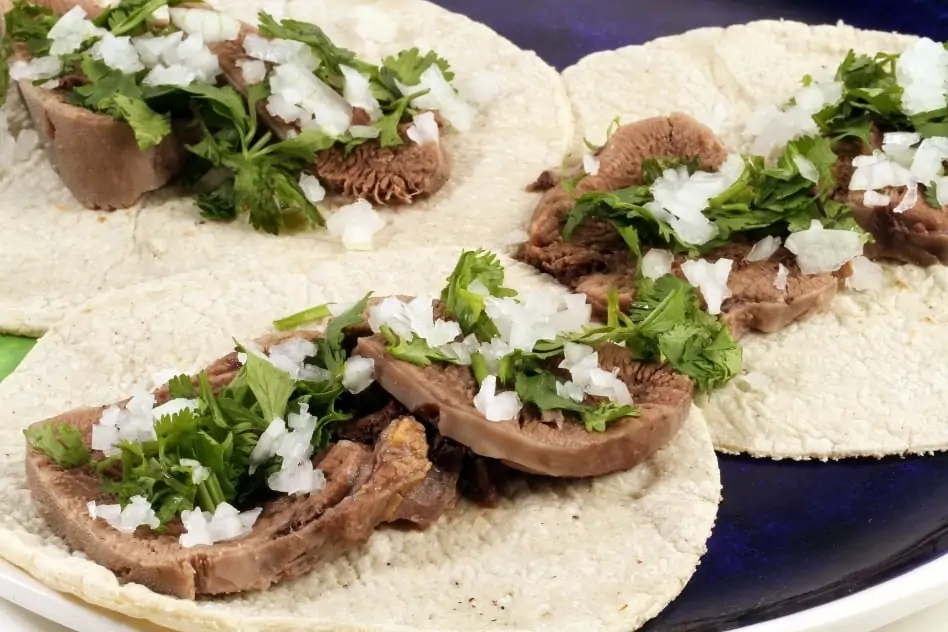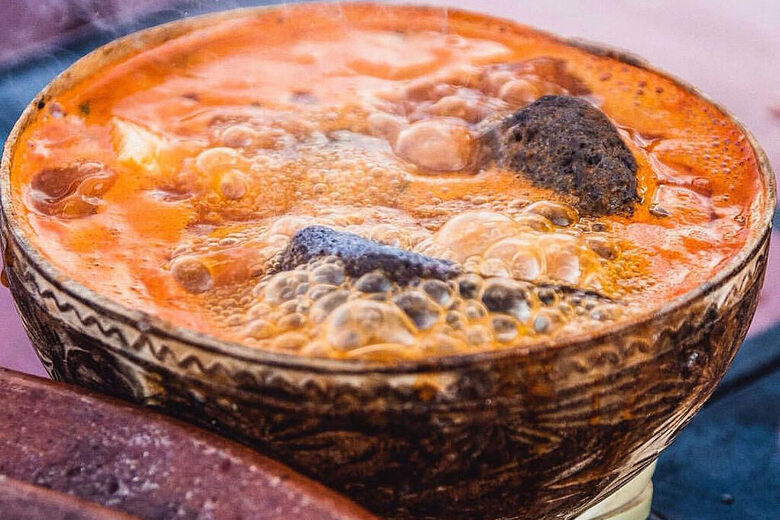Mexican food is one of my favorite cuisines. It’s exciting spicy, delicious, and very unique. While Mexican food is popular all over the world, the vast majority of Mexican restaurants outside of Mexico serve Tex-Mex.
It’s actually very hard to get the authentic Mexican food abroad, even in cities like London or New York City. If you grew up in the US you probably are used to TEX-MEX.
Even simple well-known nachos in Mexico are completely different than those in the US or Europe that are served with greasy cheese. Moreover, as explained before you shouldn’t make a mistake between nachos and nacos.
I have put together a detailed guide on Mexican cuisine, including the most authentic but lesser-known foods in Mexico, traditional Mexican dishes, and where to eat what in Mexico.

Mexican Dinners & Lunches
Sopa de Fideo Seco

Sopa means soup in Spanish. Fideo is Mexico’s version of angel hair pasta, just cut into 1-inch pieces. However, sopa de fideo seco is not a soup per se (pay attention to the word seco – dry), I made this mistake before.
It’s made of noodles smothered in a savory and mildly spicy tomato sauce. It doesn’t have a broth, it’s just a soggy portion of noodles that goes well with a side of bolillo bread.
Huitlacoche

It’s not always a good thing when fungus attacks your corn and turns it from sweet yellow globules to grey cloudlike shapeless forms. Many cultures consider corn smut a parasite that destroys crops and eats up income. But in Mexico, corn smut or huitlacoche as it’s called is a delicacy.
With a mushroom-like taste, huitlacoche has been used in Aztec cooking for centuries, finding both medicinal, and ceremonial use. You’ll find huitlacoche in sauces, quesadillas, tamales, tacos, succotash, and even added to eggs for an earthy flavor.
Tacos de Lengua

Lengua is the Mexican word for beef tongue! And tacos the lengua are quite a popular dish in Mexican culture. The beef tongue is often cooked or boiled for an hour or so till it becomes really tender. The lengua or tongue is then sliced or diced and added to the tacos along with salsa verde, onions, avocados, cilantro, and lime.
Of course, other spices such as bay leaves, garlic, thyme, or peppers can be added depending on the taste. Topped with some cotija cheese and lime, they’re really delicious!
Some of the foodie joints in Mexico that are most popular for their tacos de lengua are the Taqueria Franc in Tijuana, Tacos Rigo in Cancun, or Cantina La Ribera in Mexico City.
Menudo or Pancita

Menudo is a dish that many love, but as soon as they find out the ingredients they refuse to eat it. To me, coming from Poland, it wasn’t weird at all as we have a similar dish.
Also known as mole de panza or pancita, menudo is made from tripe, cow’s stomach or sometimes sheep stomach. In many of the traditional recipes, the cow’s foot is also added to the broth.
The menudo broth is dark and red in color because of the ancho or guajillo chilies paste used as a base. You’ll find chopped onions, hominy, lime, oregano or marjoram added to the menudo broth.
Head North towards Sinaloa and Sonora and you’ll find menudo blanco instead. The anchos and guajillos in menudo are replaced with jalapenos to produce a clear broth. So much for seeing the tripe while eating it!
Chapulines

Have you ever tried fried grasshoppers, crickets, or worms’ eggs? Now it’s your chance! Chapulines are crickets that are served as dry snacks or topping for some dishes.
It sounds gross at first, but I can assure you it’s not as bad as some make it seem. I actually like it.
The chapulines or grasshoppers are flavored with salt, lime juice, and garlic to give them a nice flavor. Often, they’re flavored with chili and sold at streetside food stalls.
Don’t want to look at the chapulines while eating them? Try some tacos chapulines! They’re tasty and crunchy!
Escamoles

Escamoles, called azcamolli in the Nahuatl are the pupae and larvae of ants. They are considered the Mexican version of caviar. Popular in Central Mexico, they look almost like cooked pine nuts or white kernels of corn. Tasting buttery and nutty, the are usually served pan-fried till crunchy with chiles or cilantro.
Chiniquiles
Chiniquiles are a species of maguey worms that infest the maguey and agave plant. The worms are technically the larvae of the moth that are harvested for addition to food or to agave liquor such as mezcal.
The nutritious reddish worms measuring up to 2.5 inches in length are usually eaten fried with lime, salt, and chili sauce.
Caldo De Piedra (Stone Soup)

Originating in Oxaca, the Caldo de Piedra or Stone Soup is made by actually putting a rock into the soup bowl. It’s traditionally cooked by the Chinantec community who live on the banks of the Papaloapan River.
The fisherfolk build a fire to heat stones for a few hours. The ingredients for the Caldo de Piedra soup – tomatoes, fish, lime, cilantro, and water – are added to jicaras made from hollow calabash gourds. A hot stone is then added to the pot and this cooks the ingredients into the famous soup.
Mexican Drinks
Pulque

Pulque is an alcoholic beverage made from the fermented sap of the maguey plant. It has a milky consistency due to the presence of yeast.
Although it’s alcohol it doesn’t get you drunk.
Drinking Pulque has been part of ancient Mexican culture for almost 2000 years with many legends centering around the goddess of the maguey, Mayahuel. The sacred drink is nowadays also flavored with different ingredients – cherries, tomatoes, oats, nuts, celery, and almost 50 other flavors.
Gusano Rojo Mezcal + Scorpion Mezcal

The gusano rojo or red worm is a moth or caterpillar larvae that are often found on the mezcal agave plants from which the Mezcal liquor is made. A really popular Mexican Mezcal, the Gusano Rojo is named after the red worm that’s added to the bottle of liquor.
Another popular drink to try in Mexico is the Scorpion Mezcal. Instead of a worm in the bottle, you’ll find a real scorpion at the bottom!
Scorpion Mezcal is traditionally distilled in copper vessels, but you’ll also find a few higher-end brands that have been aged in French Oak. Definitely try the Scorpion Mezcal Reposado!
Horchata
A drink made from fermented rice and cinnamon, horchata is popular for breakfast in Mexico. Horchata can be made by adding a variety of ingredients, from vanilla to almonds.
Horchata is so popular in Mexico, it’s classified as one of the important aquas frescas, and is easily available everywhere.
Kahlua
Popular the world over, this Kahlua coffee liqueur is actually made in Veracruz, Mexico. Made with arabica coffee and rum, it was created in 1936 by Pedro Domecq, an aristocratic Spaniard in Mexico.
The Kahlua liqueur is very versatile. It can be had on the rocks, in drinks, or in desserts!
Mexican Sweets
Gelatinas

The best way I can describe gelatina or Mexican jello, is as a more firm, slightly more flavorful panna cotta if made with milk. They’re extremely popular in Mexico.
For the Mexican Independence Day in September you’ll see plenty of gelatinas in 3 different colors symbolizing the Mexican flag.
Gelatinas are also popular desserts at birthday parties and on patron saint days.
If you find it difficult to choose a flavor, try the Gelatina de Mosaico. This popular version is made by combining chopped pieces of different flavored gelatin into one bigger gelatin cup or mold. It’s so popular, even the street vendors have it!
Candies: Skwinkles, Pulparindo, Pelon

Most Mexican candies are sour, not sweet. My favorite one would be Skwinkles – sweet and spicy long and thin jellies. And then there’s the spicy Tamarindo fruit candies called Pulparindo and very very spicy candies or drinks called Chamoy that are made with mango, apricot, and plum fruit. Mexicans love chamoy, but as my friend described it: ‘tastes like a rotted jam’.
Cajeta
The Mexican version of dulce de leche or caramel, Cajeta is usually made with goat’s milk. The slow-cooked dessert can be either eaten alone or used as a topping for ice creams, cakes, or pancakes.
Cajeta is also hardened into chewy caramel-type candies and lollipops.
One version I really like is the cajeta con obleas, where the cajeta is sandwiched between two layers of very thin wafers.
Mexican Snacks
Totopos

Totopos are Mexican chips. Every restaurant or cheap hole-in-the-wall place will give you some of them to start with, along with salsa, as you wait for your meal.
Meaning tortillas that are noisy to chew, the totopos are derived from the Nahuatl word “tlaxcaltotopochtl“. Totopos taste best when they’re made from day-old tortillas, and are often added to chilaquiles for breakfast.

Kaylini Naidoo
Wednesday 24th of June 2020
This is the type of post I should nkt be reading at 23:28 whilst laying in bed on an empty stomach. It got me salivating. I've never been an adventurous eater and Mexican food isn't big where I come from, but I absolutely love it. Enchiladas, tostadas, soft shell tacos and churros are my favs, but after reading your post im totally enlightened! There is all look much more I need to try! Would love to visit Mexico someday for an authentic experience.
Alice
Saturday 20th of June 2020
Nice write up. My favorite food in Mexico is the Chiles en Nogada?????? and just about anything else. Before coming to Mexico, I thought all the food would be hot and spicy. Definitely not since I've eaten out here so many times. The hit and spicy is optional in many cases. FYI you have a spelling error you might want to fix ??